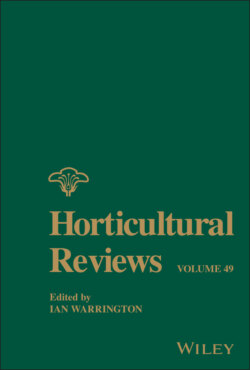Читать книгу Horticultural Reviews, Volume 49 - Группа авторов - Страница 31
X. FUTURE PROSPECTS
ОглавлениеHydrangea quercifolia is a particularly understudied and underutilized species with unique horticultural potential. Because it is unrivaled among hydrangeas for its year‐round aesthetic value and intriguing foliar characteristics, it can be described as “a shrub with a difference” (Lawson‐Hall and Rothera 1995). Hydrangea quercifolia has immense potential waiting to be developed. The amount of improvement seen in H. macrophylla, H. paniculata, and H. arborescens over the previous century serves as an example of the possibilities the genus has to offer. To date, progress has been made in selecting for compactness and floral traits, however, there are other traits which would benefit from improvement.
Resistance to biotic and abiotic stressors are still a priority and have not yet received enough attention. Cold tolerance and deacclimation timing are limiting factors in cold climates. This is currently being examined in the species across its latitudinal range which will reveal the extent of cold hardiness and variation for deacclimation timing that is available for selection. Resistance to wilt and foliar pathogens still needs to be studied in order for H. quercifolia to be robust enough to survive nursery production reliably and still be attractive in the landscape with minimal pesticide applications. Tolerance to heat and direct sunlight are important traits to identify for southern growers.
Another trait that has yet to receive any appreciable amount of attention is floral scent. The floral scent in wild oakleaf hydrangea plants is sweet and, although not strong, it is generally stronger than that of other Hydrangea species (A. Sherwood, pers. observ.). Because Hydrangea are typically not considered to possess fragrant flowers, a cultivar with a stronger fragrance would be quite significant. It is unknown what compounds make up the scent, nor what floral organs produce them. This trait would be interesting as a breeding target and likely plays a role in pollination in the wild.
